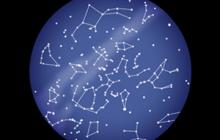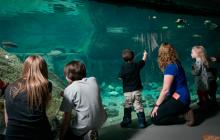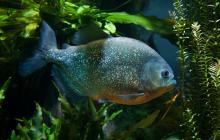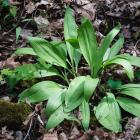Preserving biodiversity at school
What is SEM’AIL?
The Biodôme developed SEM’AIL—a wild leek awareness and restoration program—in 1999. We estimate that this program has led to the creation of over 500 new colonies of wild leek in the regions most affected by over-harvesting: Montérégie, Lanaudière, Outaouais, the Laurentians and the Eastern Townships. However, despite our best efforts, the species is still widely harvested!
Why SEM’AILjr?
In spring of 2010, the International Year of Biodiversity, the Biodôme developed a new kind of educational program: SEM’AILjr. The secret mission of the agents of our F.B.Ail squad: to get hands-on experience preserving biodiversity by creating a viable population of wild leek in their area.
Why do we want to stimulate young people’s interest? First of all, they are growing up in a world of technology that leaves very little room for nature. Secondly, having a positive experience with nature at a young age tends to create a bond with the environment.
The wild leek needs you!
The wild leek (Allium tricoccum) is a small springtime plant that is typical of our maple forests. Its bulbs are edible and much sought-after. In 1995, it became the first officially designated vulnerable species in Québec. Selling it is now illegal, and harvesting for personal purposes is limited to 50 bulbs per year. As a well-known species, it has become emblematic of conservation in Québec.
The SEM’AILjr experience
Since 2010, 13 schools in the regions most affected by the decline have accepted the challenge to create a new viable colony of wild leek in their community. The youngsters’ in-class training begins in April with a workshop led by an educator from the Biodôme, covering the topics of biodiversity and wild leek, its biology and its habitat. A month later, the whole class goes into the woods to plant the wild leek. Each student sows 100 seeds, for a total of 2,500 to 3,000 per class. The students—mostly fourth-graders—can then follow up on their mission the next spring by counting how many plants have sprouted from the seeds and bulbs. To expand the project’s reach, a network of educator groups has been under development since 2013. Last year, eight environmental education and conservation organizations in the target regions went out to sow seeds with students from local schools, thus creating more new colonies of wild leek. 550 young people are already involved in SEM’AILjr—true agents of conservation in Québec!







